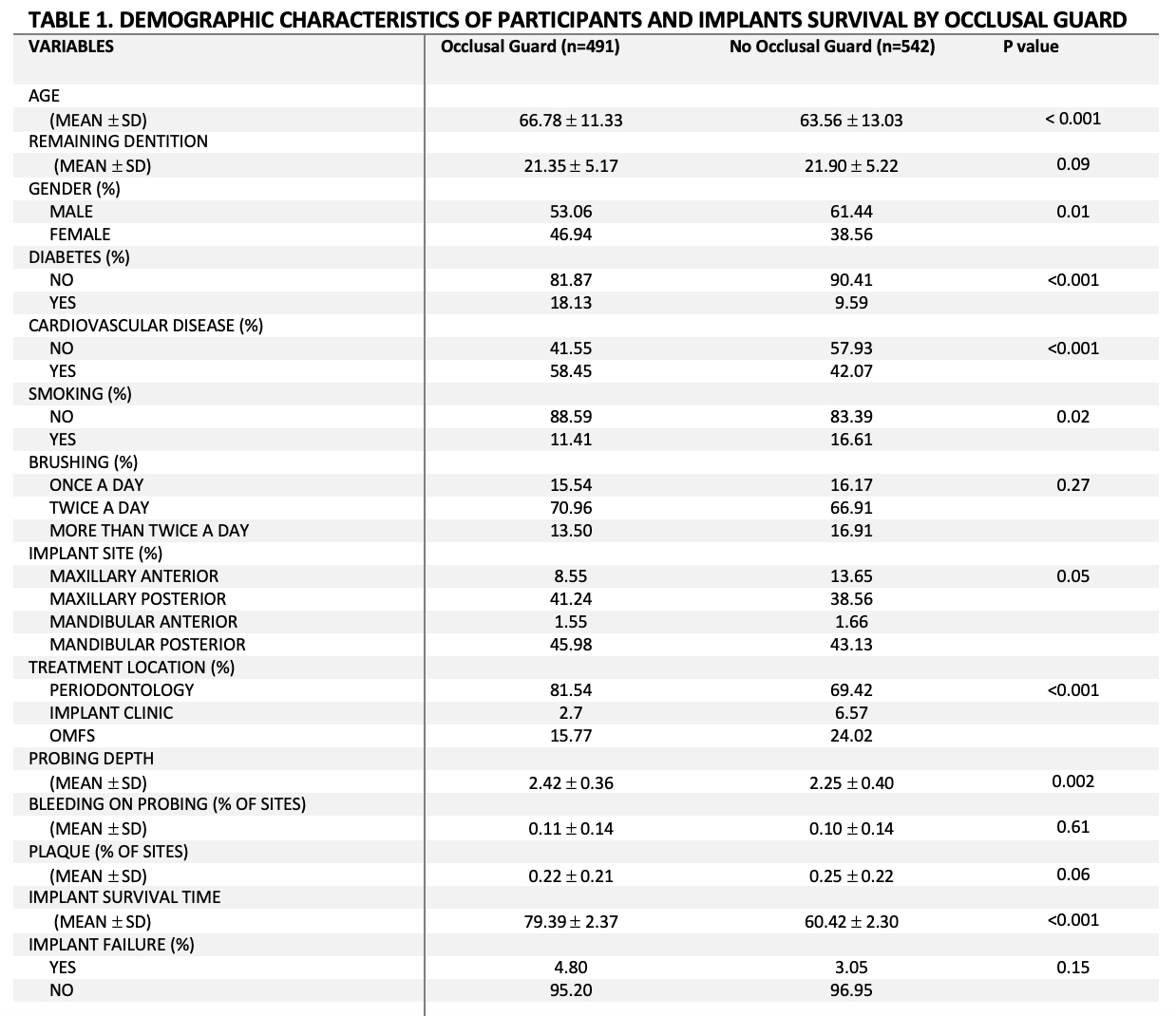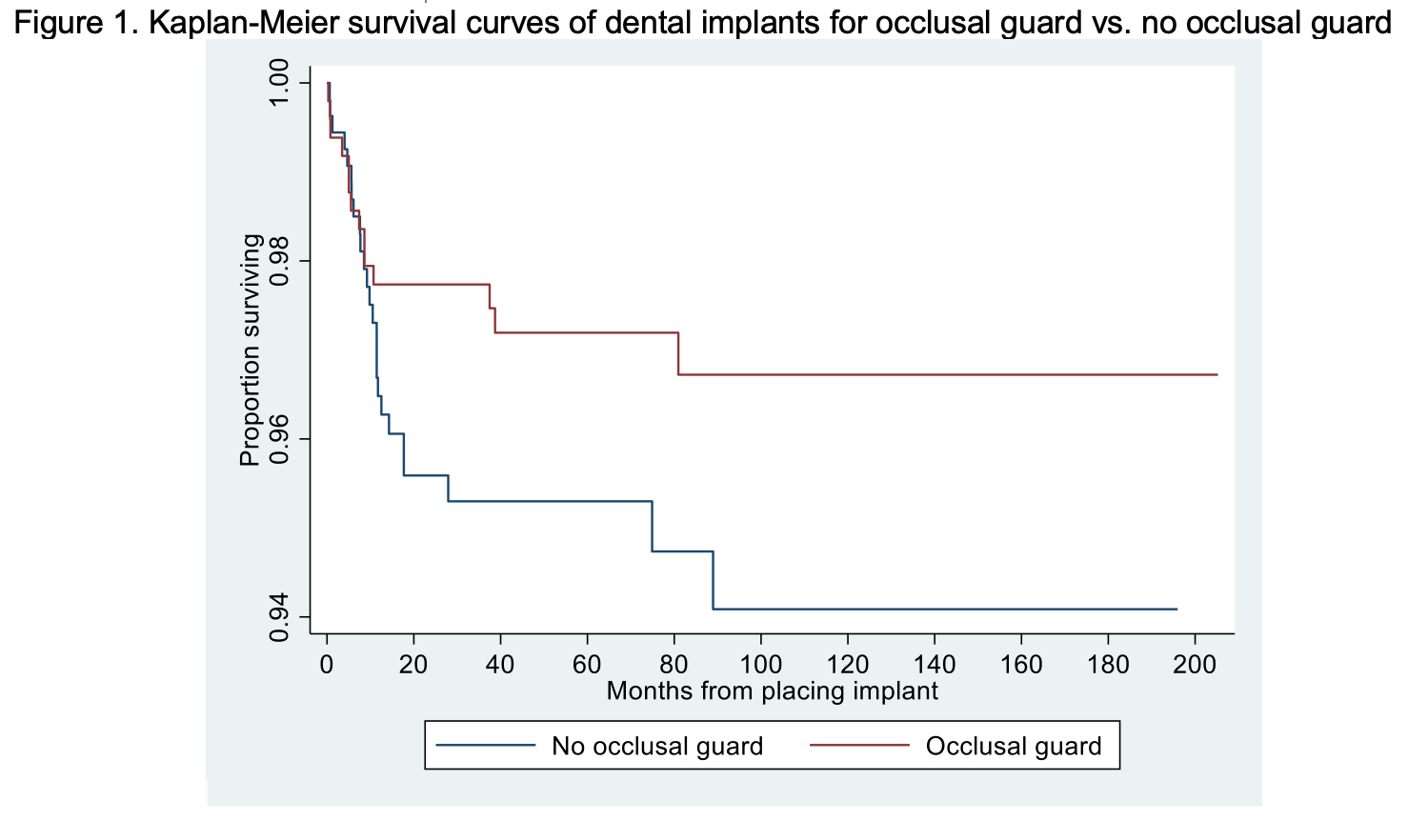IADR Abstract Archives
Implant Failure Rates and the Use of an Occlusal Splint
Objectives: To assess the association between dental implant survival and the use of an occlusal guard in patients with bruxism.
Methods: A retrospective review of patient charts was conducted to assess the association between the use of an occlusal guard and dental implants in patients with bruxism. Patients were included if they had at least one dental implant and bruxism. This was further broken down into two groups: those who used an occlusal splint and those who did not. Data was extracted for all implants that fit the inclusion criteria between the dates January 1, 2005-June 30, 2020. The data from follow up appointments was evaluated through June 30, 2021. 1,033 implants were included in the data analysis. Dental implant failure was considered the dependent variable and was defined as the implant no longer being present in the mouth at any of the follow up visits. Potential confounders included patient related variables, dental related variables, and implant related variables (Table 1). Kaplan-Meier analysis was used to create survival curves stratified using an occlusal guard vs. not using an occlusal guard. The log rank test and univariable Cox regression analyses were used to assess the association between implant failure and using an occlusal guard and covariates. Multivariable analysis was performed using the Cox proportional hazards regression model to determine if an occlusal guard affects implant failure, correcting for confounding factors. Significant threshold was set at 0.05.
Results: Kaplan-Meier survival curves indicated higher survival of dental implants for occlusal guard than no occlusal guard (Figure 1). Multivariable cox regression showed that the risk of implant failure among no occlusal guard group is twice the risk of implant failure among occlusal guard group (Table 2).
Conclusions: No occlusal guard significantly increases the risk of dental implant failure among bruxism patients.
Methods: A retrospective review of patient charts was conducted to assess the association between the use of an occlusal guard and dental implants in patients with bruxism. Patients were included if they had at least one dental implant and bruxism. This was further broken down into two groups: those who used an occlusal splint and those who did not. Data was extracted for all implants that fit the inclusion criteria between the dates January 1, 2005-June 30, 2020. The data from follow up appointments was evaluated through June 30, 2021. 1,033 implants were included in the data analysis. Dental implant failure was considered the dependent variable and was defined as the implant no longer being present in the mouth at any of the follow up visits. Potential confounders included patient related variables, dental related variables, and implant related variables (Table 1). Kaplan-Meier analysis was used to create survival curves stratified using an occlusal guard vs. not using an occlusal guard. The log rank test and univariable Cox regression analyses were used to assess the association between implant failure and using an occlusal guard and covariates. Multivariable analysis was performed using the Cox proportional hazards regression model to determine if an occlusal guard affects implant failure, correcting for confounding factors. Significant threshold was set at 0.05.
Results: Kaplan-Meier survival curves indicated higher survival of dental implants for occlusal guard than no occlusal guard (Figure 1). Multivariable cox regression showed that the risk of implant failure among no occlusal guard group is twice the risk of implant failure among occlusal guard group (Table 2).
Conclusions: No occlusal guard significantly increases the risk of dental implant failure among bruxism patients.



